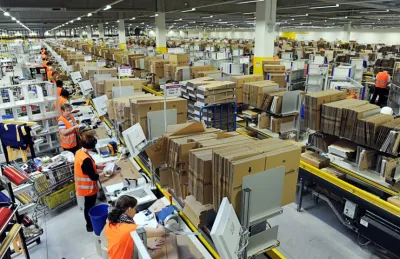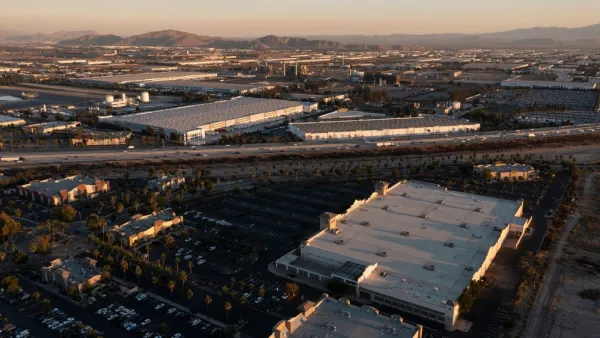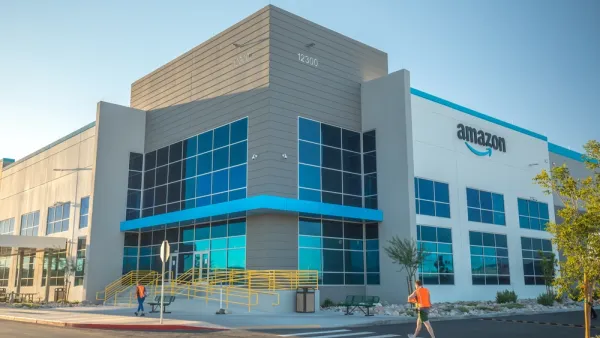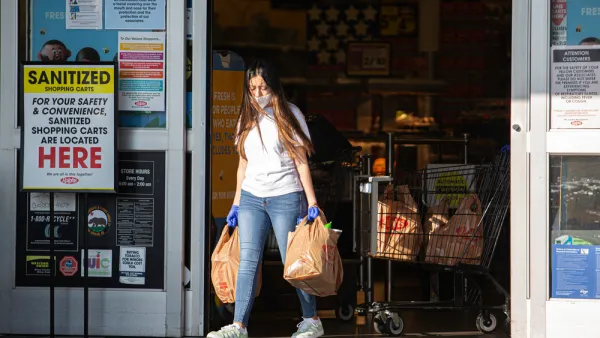Often located in low-income communities of color, Amazon's warehouses contribute to public health impacts like poor air quality, noise pollution, and traffic congestion.

An investigation from Consumer Reports uncovered that most neighborhoods where Amazon builds its warehouses are home to more people of color and low-income households than other neighborhoods in the same areas—and that this choice has powerful consequences for local residents. According to an article by Kaveh Waddell, "Residents near the new warehouses say they face increased air pollution from trucks and vans, more dangerous streets for kids walking or biking, and other quality-of-life issues, such as clogged traffic and near-constant noise."
According to the investigation's findings, "the neighborhoods where Amazon opens warehouses often have a greater proportion of people of color than 70 percent or more of the surrounding metro area’s neighborhoods." Meanwhile, the company's retail stores, such as Whole Foods, are more often located in "wealthier, whiter neighborhoods."
The article details the health impacts of truck traffic and pollution and the disproportionate influence of Amazon in the growing delivery industry. In many cases, the company receives tax incentives to build warehouses, effectively receiving subsidies from the very communities their operations harm.
In response to concerns about impacts on neighborhoods and labor issues, some cities in Southern California's Inland Empire have passed moratoriums on new warehouses, and the state's attorney general sued to stop the construction of a (non-Amazon) warehouse project. And while Amazon has promised to electrify its delivery truck fleet, that change would not mitigate the effects of heavy trucks lumbering down residential streets and, in some cases, causing physical damage to adjacent homes.
As Amazon's need for more warehouses continues to grow, the company is now buying real estate rather than leasing it to capture more of the value created by their properties.
FULL STORY: When Amazon Expands, These Communities Pay the Price

Analysis: Cybertruck Fatality Rate Far Exceeds That of Ford Pinto
The Tesla Cybertruck was recalled seven times last year.

National Parks Layoffs Will Cause Communities to Lose Billions
Thousands of essential park workers were laid off this week, just before the busy spring break season.

Retro-silient?: America’s First “Eco-burb,” The Woodlands Turns 50
A master-planned community north of Houston offers lessons on green infrastructure and resilient design, but falls short of its founder’s lofty affordability and walkability goals.

Test News Post 1
This is a summary

Analysis: Cybertruck Fatality Rate Far Exceeds That of Ford Pinto
The Tesla Cybertruck was recalled seven times last year.

Test News Headline 46
Test for the image on the front page.
Urban Design for Planners 1: Software Tools
This six-course series explores essential urban design concepts using open source software and equips planners with the tools they need to participate fully in the urban design process.
Planning for Universal Design
Learn the tools for implementing Universal Design in planning regulations.
EMC Planning Group, Inc.
Planetizen
Planetizen
Mpact (formerly Rail~Volution)
Great Falls Development Authority, Inc.
HUDs Office of Policy Development and Research
NYU Wagner Graduate School of Public Service




























